The Study
The present study is focused on the investigation of distinctions between low-context and high-context communication in terms of business relations. It has been proved that to ensure productive negotiations, people who are interacting should perform negotiating at the same context cultures. The hypothesis of the study is that negotiation process and conflict management is easier when business colleagues are at the same context culture level.
Study Design
The study was conducted via a survey consisting of twenty-one questions (Appendix 1). Prior to completing the survey, stakeholders got acquainted with the statement of consent and were notified about the benefits and costs of the survey. The first group of questions was aimed at finding out the demographic data about the participants. Six questions regarding age, sex, education, and experience in the industry were in this category. People chose the most suitable from several options (the country of origin, age, sex, place and level of education, and the number of years in the field of logistics).
The second group of questions was focused on obtaining the information about the participants’ cultural context. Fifteen questions were included in this group, the answers to which were obtained with the help of Likert scale. Participants were supposed to choose from the options (1) strongly agree, (2) somewhat agree, (3) neither agree nor disagree, (4) somewhat disagree, and (5) strongly disagree. Questions were aimed at determining the participants’ culture context and then at finding out the ways in which they solved intercultural conflicts (Appendix 2). Out of fifteen questions in this category, eight were specific to high-context and seven were specific to low-context cultures.
The study design and questions were adapted from the study by Erdem (2006). Professor Erdem has published a number of works about culture and context divergences. While his survey was performed and presented in Turkish, mine was translated into English and distributed among fluent English speakers. To ensure the absence of translation or meaning mistakes, I asked my colleagues from the US and Turkey to back-translate the survey questions.
Method
For the current study, a survey method was used. The participants were required to answer the questions administered through a questionnaire. When the responses were received, they were described by the researcher. Before administering the survey, special attention was paid to the construction of questions. For the study to be valid and reliable, survey questions need to be thoroughly formulated.
Questions in the current research were created in a way which would make it easy and unambiguous for the participants to answer them. Two types of questions were employed for the two parts of the survey. The first group of questions, aimed at finding out the participants’ demographic data, was followed by alternatives from which people could choose their age group, nationality gender, and education. The second group of questions, focused on obtaining the information about people’s cultural context, was followed by the options from Likert scale.
Survey method was the most appropriate for this kind of research. Interviewing of the participants made it possible to gather an ample amount of data to analyze. It was easier to answer the research question and check the hypothesis when many participants shared their cultural context experience in correspondence with demographic data.
Sample
The type of sampling procedure used for the current research was convenience sampling. This type is rather easy to employ and eliminates the number of participants who are not relevant for the study. The meaning of this sampling method is clear from its title: participants are easily (conveniently) accessed. Thus, the first data that is available from the participants can be used for analysis and conclusions about the research question.
In the case with the present study, participants were chosen from the people who worked for Turkish-American logistic companies for a period no less than six months. Such choice of stakeholders allowed to obtain only useful data which would help to find an answer to the research question. Since people were chosen by convenience sampling, I was sure that almost no time would be wasted on checking and analyzing the survey results. The answers of almost all participants (176 out of initial 180) proved to be useful for the research. Since the research question and hypothesis were connected with the low-context and high-context cultures of American and Turkish employees, the answers gathered with the help of convenience sampling were relevant and helpful.
Data Collection
Data was collected with the help of a survey. This type of data collection is one of the most frequently employed tools as it allows to find out people’s opinions about certain subjects or receive answers to some questions without having to spend time on arranging personal meetings. The survey was distributed via email to the employees of a Turkish-American logistic company. A total of 180 surveys were collected. The participants were identified by the author’s personal contacts with the employees at Turkish-American logistic companies. People between the ages of 18 and 65 were invited to participate in the questionnaire.
It was ensured that the American participants were raised in the East coast region of the country and the Turkish participants had earned a degree from the US colleges or had worked in some Turkish-American logistic company for a period no less than six months. Participants who did not attend high school in the US or Turkey were excluded from the study. In the end, 176 surveys were left for analysis. Data was collected via the internet, so there was only a need to systematize the results, as they were already received in electronic form.
Data Analysis
After obtaining the participants’ answers to survey questions, data was analyzed in several steps. First of all, the first set of answers concerning demographic information was considered. The number of the participants born in Turkey and the US was counted, the percentage of males and females was established, participants’ age groups were defined, their place of graduation and education levels were identified, and experience in working in the field of logistics was analyzed. For each of the questions, answers were analyzed in two ways: by counting the number of answers for a certain option and by measuring the percentage of replies.
Next, questions concerning cultural context were analyzed according to replies obtained via Likert scale. Again, the percentage of certain answers was indicated, as well as the count of answers given for each option
- strongly agree,
- somewhat agree,
- neither agree nor disagree,
- somewhat disagree,
- strongly disagree.
A substantial number of participants enabled the researcher to gain diverse answers to the questions playing a crucial role for research. After analyzing the data received from the survey, it became possible to establish the survey results, answer the research question, and check the hypothesis.
Results
After analyzing the data obtained from the survey, the following results were established. 51% of the participants were male, while 49% were female. What concerns age (see table 1), 7.82% of people were between 18 and 24 years old, 40.22% were 25-24 years old, 21.79% were 35-44, 13.41% were 45-54, 12.29% were 55-64, and 4.47% were 65 or older. Thus, there were the representatives of all working age groups with the biggest emphasis on the employees aged 25-34. However, it is important that all categories – from the youngest to the oldest – were included, since their feedback adds up to the research’s reliability.
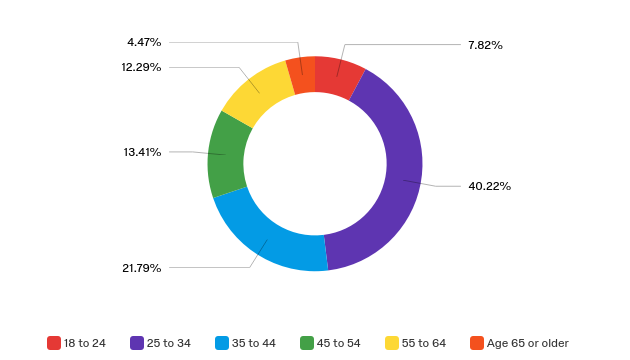
58.66% of participants finished high school in the US, and 41.34% graduated high school in Turkey. An important issue for the research was the participants’ education level (see table 2). Out of the suggested options, no one chose “less than high school.” The most popular answers were “a 4-year degree” (57.30%) and “a professional degree” (23.60%). Six participants had only high school degree, and three people had a doctorate.
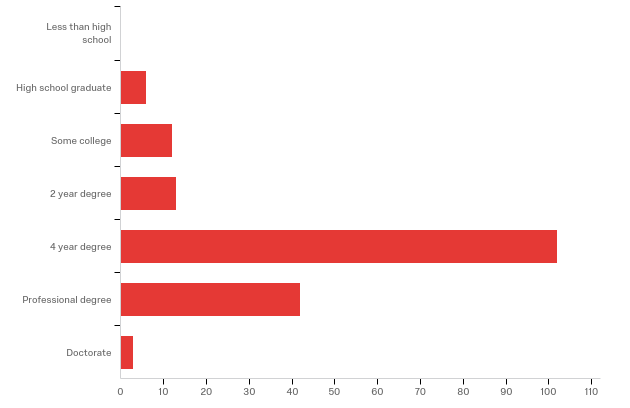
The next important factor for the research was identifying the participants’ work experience in logistics (see table 3). 6.74% of respondents had a one to six months of experience; 7.30% had been working for 6 to 12 months. The majority of respondents had a considerable practice in logistics: 26.97% had worked for 1-5 years, 24.16% – 5-10 years, 18.54% – 10-20 years, and 16.29% – 20 years or longer.
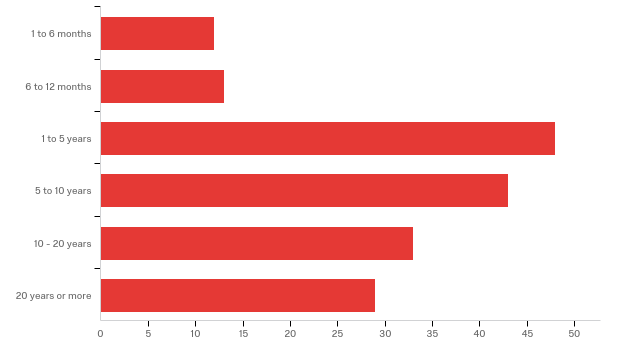
When asked whether people should focus on what their interlocutor would like to say rather than what they are actually saying during communication, the participants responded in the following way (see table 4): 25.28% strongly agreed, 28.09% somewhat agreed, 13.48% neither agreed nor disagreed, 15.17% somewhat disagreed, and 17.98% strongly disagreed.
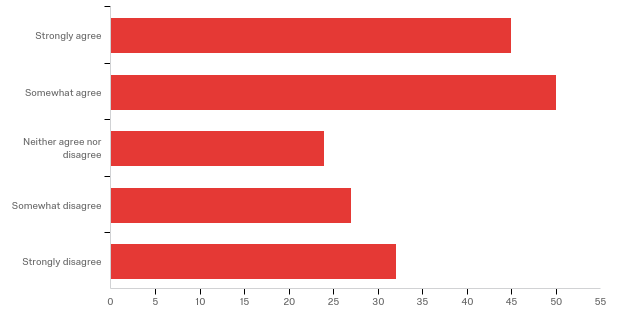
When inquired whether people tend to be direct rather than imply their meaning, respondents gave the following answers (see table 5): 23.03% strongly agreed, 33.71% somewhat agreed, 10.67% neither agreed nor disagreed, 19.10% somewhat disagreed, and 13.48% strongly disagreed.
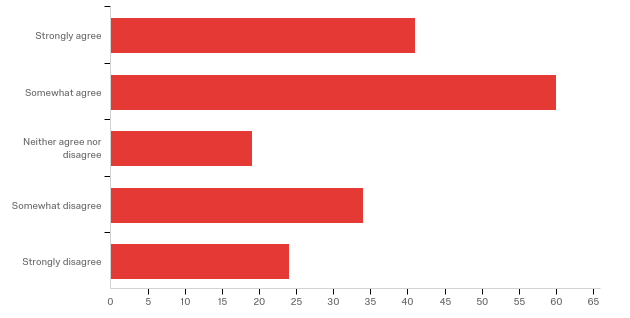
When asked whether people prefer to make veiled criticisms during communication, participants responded the following (see table 6): 17.61% strongly agreed, 45.45% somewhat agreed, 16.48% neither agreed nor disagreed, 9.66% somewhat disagreed, and 10.80% strongly disagreed.
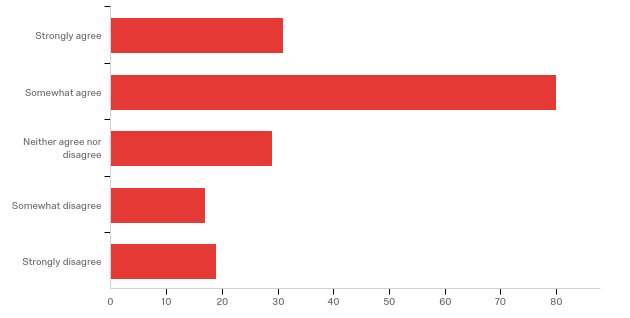
To the statement “When communicating, the choice of words is as important as the behavior and attitude of the speaker,” respondents reacted in the following way (see table 7): the majority (50.86%) strongly agreed, 18.86% somewhat agreed, 8% neither agreed nor disagreed, 14.29% neither agreed nor disagreed, and 8% strongly disagreed.

When asked whether they think that there are differences between what people say to one’s face and what they keep in their heart, the following replies were obtained (see table 8): 32.95% strongly agreed, 35.26% somewhat agreed, 11.56% neither agreed nor disagreed, 9.25% somewhat disagreed, and 10.98% strongly disagreed.
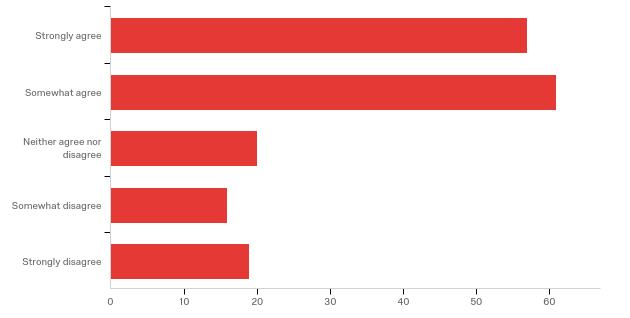
When inquired about the employees’ unwillingness to criticize their managers directly, participants gave the following answers (see table 9): 31.64% strongly agreed, 36.16% somewhat agreed, 15.25% neither agreed nor disagreed, 9.6% somewhat disagreed, and 7.34% strongly disagreed.
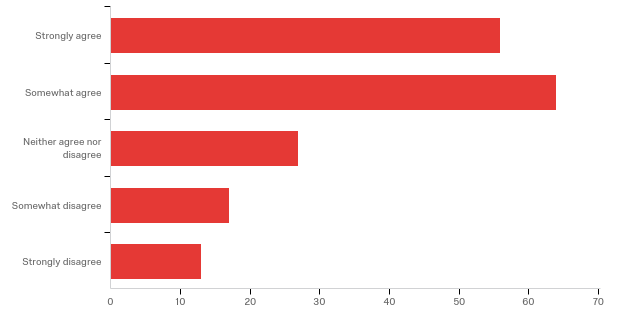
To the statement “Being honest and straightforward when communicating with others is very important in society,” respondents reacted in the following way (see table 10): 59.09% strongly agreed, 30.11% somewhat agreed, 5.11% neither agreed nor disagreed, 3.98% somewhat disagreed, and 1.7% strongly disagreed.
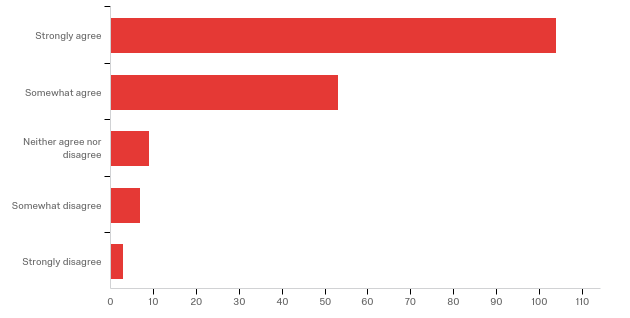
When asked about people’s straightforwardness and clarity when giving messages to others participants replied the following (see table 11): 20.45% strongly agreed, 34.09% somewhat agreed, 15.91% neither agreed nor disagreed, 25% somewhat disagreed, and 4.55% strongly disagreed.
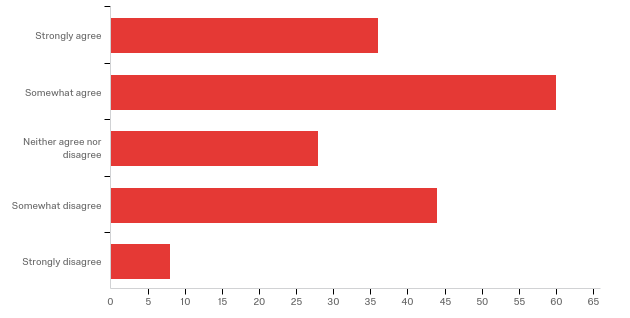
To the statement “when communicating, individuals say everything that needs to be said to people’s face instead of talking behind their backs,” participants reacted in the following way (see table 12): 21.02% strongly agreed, 25.57% somewhat agreed, 15.91% neither agreed nor disagreed, 20.45% somewhat disagreed, and 17.05% strongly disagreed.
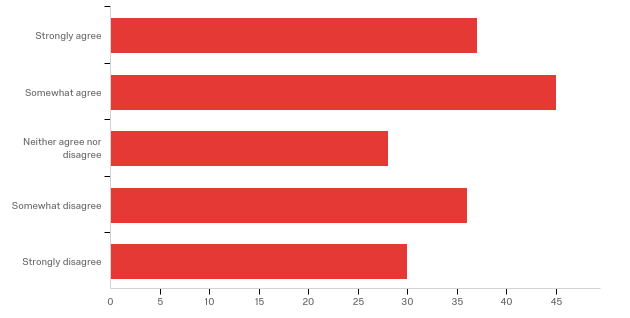
When inquired about their issue of cultural clues not being necessary for comprehending messages, respondents reacted in the following way (see table 13): 18.39% strongly agreed, 33.33% somewhat agreed, 25.86% neither agreed nor disagreed, 18.97% somewhat disagreed, and 3.45% strongly disagreed.
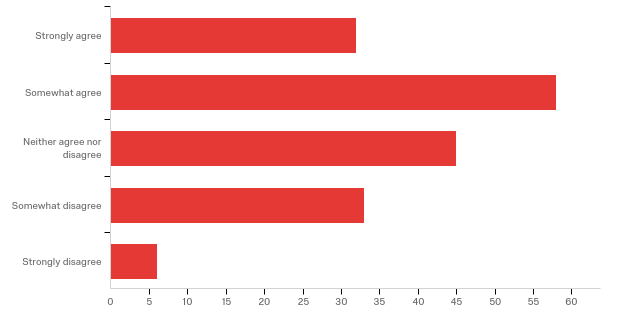
To the statement “for good communication, individual messages should be clear and obvious so individuals do not need to look underneath the words to get the message,” participants’ reaction was as follows (see table 14): 63.07% strongly agreed, 28.98% somewhat agreed, 4.55% neither agreed nor disagreed, 2.84% somewhat disagreed, and 0.57% strongly disagreed.
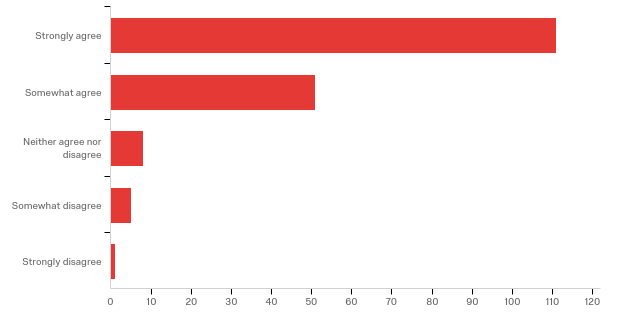
When asked about people’s freedom of expressing their comments and critiques directly and clearly in any environment, participants replied the following (see table 15): 27.43% strongly agreed, 37.71% somewhat agreed, 14.86% neither agreed nor disagreed, 16% somewhat disagreed, and 4% strongly disagreed.
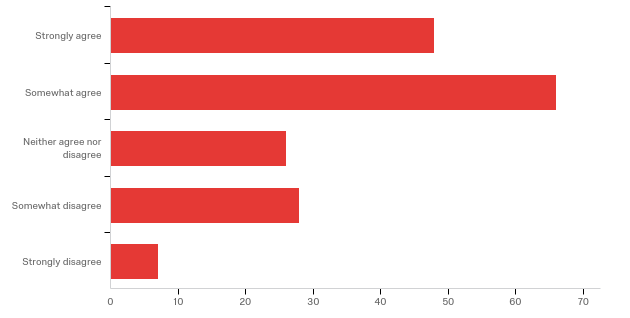
To the statement “in our society, individuals feel comfortable saying ‘’no’’ to requests from their friends,” respondents reacted in the following way (see table 16): 22.29% strongly agreed, 30.29% somewhat agreed, 8% neither agreed nor disagreed, 28% somewhat disagreed, and 11.43% strongly disagreed.
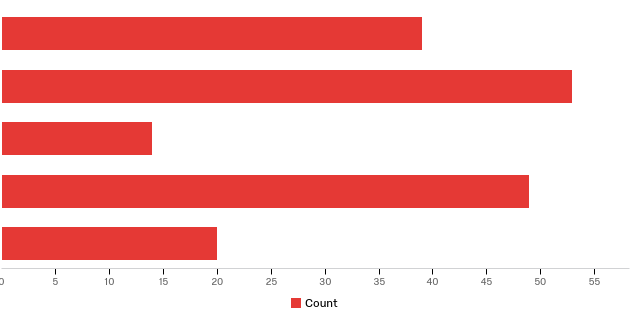
Discussion of Results
Study results are related to a number of research papers dedicated to the analysis of culture context’s role in business negotiating process. For instance, the study by Allen et al. (2014) emphasizes the impact of communication traits on people’s communication. In my research, the majority of respondents agree that being honest and straightforward when communicating with others is very important in society (see table 10).
The research papers by and Chua and Gudykunst (1987), Croucher et al. (2012), Kim et al. (1998), and Usunier and Roulin (2010) are focused on the investigation of how low- and high-context cultures impact the interaction process and what can be done in order to eliminate conflict situations. The most important factor constituting good communication, according to the respondents’ reaction, is the clarity of individual messages (see table 14).
The majority of people believes that when messages are obvious, communication process is easier. At the same time, more than half of the participants admits that their colleagues are quite straightforward when giving messages (see table 11). Thus, it can be concluded that people not only realize the role of clarity in communication but also try to conform to such approach in practice.
Multicultural communication at a workplace was the object of Angouri’s and Miglbauer’s (2014) study. Croucher et al. (2013) performed a research with a focus on the US and Turkish participants. Following these examples, my research also investigated the peculiarities of multicultural business communication, namely between Turkish and American colleagues. Research results show that people consider it significant that during intercultural communication, interlocutors should approach the question of word choice rather attentively (see table 7). Most respondents agree that not only speaker’s attitude but his/her words play a crucial role in communication.
During the research, it was established that most people prefer to make veiled critical remarks during communication (see table 6). By doing so, they make sure that their interlocutor understands their dissatisfaction, but he/she does not get irritated since the remark is done in a subtle way. Moreover, most participants believe that there is a significant difference between what people say and what they keep in their heart (see table 8) which also indicates people’s desire to eliminate conflict situations.
The importance of negotiation techniques has been the focus of research by Putnam (2010), Toomey et al. (2013), Yoneoka (2011), and other scholars. The importance of mediating conflicts is considered a rather crucial constituent of effective communication at work. One of the ways of doing so is to eliminate the arguments with management team. The majority of survey participants agrees that employees are not willing to criticize their managers directly (see table 9).
Comparing this result with the outcomes of Table 15, which shows that people feel free expressing their critique clearly and directly, the following conclusion can be made. Employees realize that they have freedom of speech, but they are cautious enough not to express it in every situation because such behavior might lead to unpleasant outcomes. The respondents’ reactions to the question about people being direct in communication were divided into two almost equal parts (see table 12): 47.59% participants strongly or somewhat agreed that people say everything to one’s face, whereas 39.43% strongly or somewhat disagreed.
At the same time, talking about informal communication, participants admitted that they feel comfortable saying “no” to their friends (see table 16). A conclusion can be made that in business communication, people are more cautious in choosing their models of behavior than in personal discourse. Therefore, the hypothesis of the research has been proved: if negotiators are in the same context cultures, negotiation and conflict management can be gained more easily.
Conclusion
The study was dedicated to the analysis of divergences between low-context and high-context communication in business communication. It has been proved by many researchers that to ensure productive negotiations, people who are interacting should perform negotiating at the same context cultures. The hypothesis of the study was that negotiation process and conflict management become easier when business colleagues are at the same context culture level. As a result of a comprehensive survey consisting of two blocks of questions, it became possible to trace the main trends in business communication of Turkish and American employees.
Intercultural communication competency is the tool which makes working relationships more comfortable. While the USA has a low-context culture and Turkey has a high-context one, colleagues belonging to these two nationalities need to adapt their cultural norms so that communication has the most productive outcomes. Interaction at a personal level is quite different from business communication. At work, and especially in a diverse environment, every employee needs to keep in mind that his/her hidden meanings and contexts may be either misunderstood or not comprehended at all by someone belonging to a different culture. Therefore, to achieve the most beneficial negotiation goals, business colleagues should be at the same context culture level.
Works Cited
Allen, Jerry L. et al. “The Influence of Communication Traits and Culture on Perceptions of Distance in Intracultural and Intercultural Relationships in the United States.” China Media Research, vol. 10, no. 1, 2014, pp. 72-88.
Angouri, Jo, and Marlene Miglbauer. “‘And then We Summarise in English for the Others’: The Lived Experience of the Multilingual Workplace.” Multilingua, vol. 33, no.1-2, 2014, pp. 147-172.
Chua, Elizabeth G., and William B. Gudykunst. “Conflict Resolution Styles in Low- and High Context Cultures.” Communication Research Reports, vol. 4, no. 1, 1987, pp. 32-37.
Croucher, Stephen M. et al. “Argumentativeness and Political Participation: A Cross-Cultural Analysis in the United States and Turkey.” Communication Studies, vol. 64, no. 1, 2013, pp. 18-32.
—. “Conflict Styles and High-Low Context Cultures: A Cross-Cultural Extension.” Communication Research Reports, vol. 29, no. 1, 2012, pp. 64-73.
Erdem, Ramazan.“İletişim EğilimlerininYüksek-Düşük BağlamAyırımı Ile Ölçülmesi: Türkçe Bir Ölçek Geliştirme Çalışması.” Üniversitesi Sağlık Hizmetleri Meslek Yüksekokulu, vol. 1, no. 2, 2006, pp. 18-25.
Kim, Donghoon et al. “High Versus Low-Context Culture: A Comparison of Chinese, Korean, and American Cultures.” Psychology and Marketing, vol. 15, no. 6, 1998, pp. 507-521.
Putnam, Linda L. “In Point of Practice: Communication as Changing the Negotiation Game.” Journal of Applied Communication Research, vol. 38, no. 4, 2010, pp. 325-335.
Toomey, Adrian et al. “Bicultural Identity Negotiation, Conflicts, and Intergroup Communication Strategies.” Journal of Intercultural Communication Research, vol. 42, no. 2, 2013, pp. 112-134.
Usunier, Jean-Claude, and Nicolas Roulin. “The Influence of High- and Low-Context Communication Styles on the Design, Content, and Language of Business-to-Business Web Sites.” Journal of Business Communication, vol. 47, no. 2, 2010, pp.189-227.
Yoneoka, Judy. “The Importance of Language Negotiation in Initial Intercultural Encounters: The Case of the Service Industry Employee.” Intercultural Communication Studies, vol. 20, no. 1, 2011, pp. 90-103.